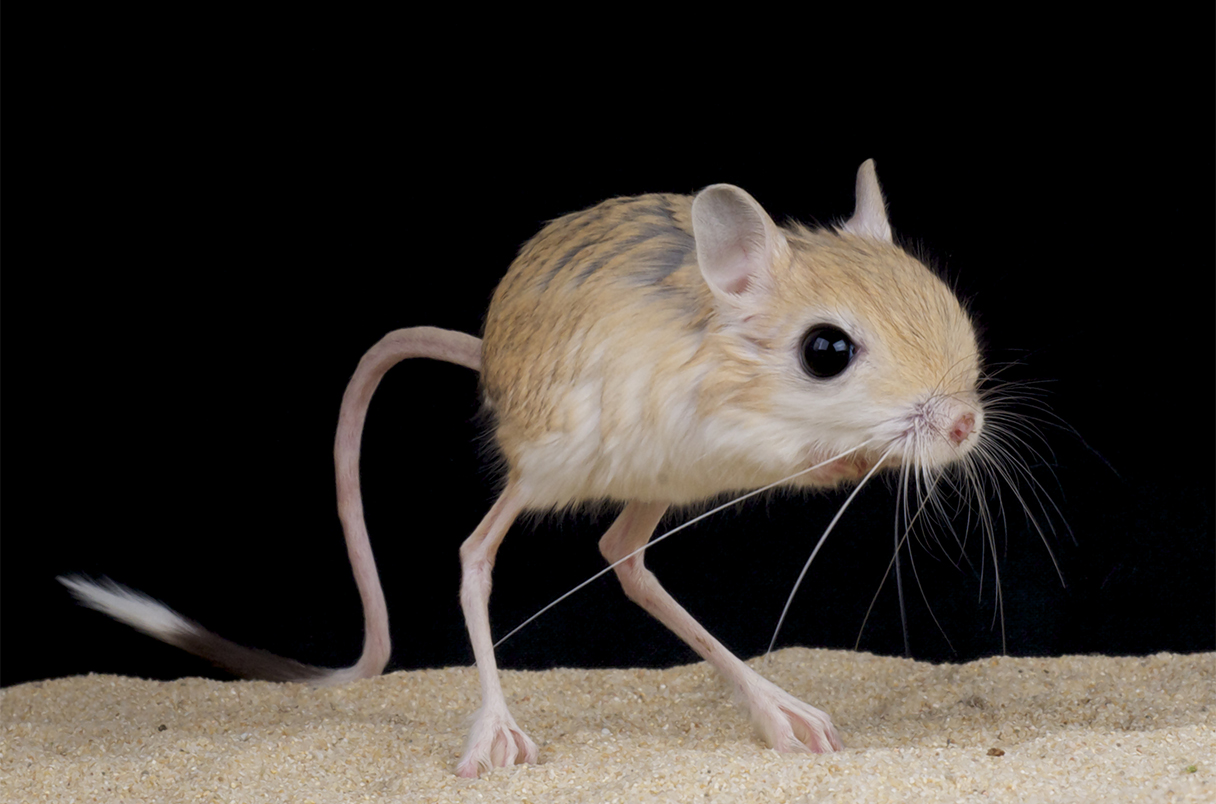
Jerboas are unique and fascinating animals that belong to the rodent family. These small creatures are known for their incredible jumping abilities and distinctive appearance. Jerboas have long hind legs, short front legs, and a long tufted tail, making them resemble miniature kangaroos. Found in the deserts of North Africa and Asia, these nocturnal creatures have adapted to survive in arid environments.
In this article, we will explore 13 interesting facts about jerboas, shedding light on their behavior, habitats, and adaptations. Whether you’re a nature enthusiast or simply curious about these charming little animals, prepare to be amazed by the wonders of the jerboa world.
Key Takeaways:
- Jerboas are desert-dwelling rodents with long legs, big ears, and amazing jumping abilities. They can survive without water, have fur-covered feet, and communicate in unique ways.
- Jerboas are solitary animals that create elaborate underground burrows for protection. They have excellent night vision, hibernate in harsh conditions, and are not domesticated pets.
Jerboas have remarkably long hind legs.
One of the most distinctive features of jerboas is their long hind legs, which are built for jumping and hopping across the desert sands with great agility.
They are excellent jumpers.
Thanks to their specialized leg structure, jerboas can achieve impressive leaps of up to 10 feet in length, covering remarkable distances in a single bound.
Jerboas have large ears.
Their oversized ears serve multiple purposes, including detecting predators, dissipating heat, and enhancing their sense of hearing.
They have a unique form of communication.
Jerboas use a combination of foot thumping, tail drumming, and vocalizations to communicate with each other and establish territories.
Jerboas can survive without drinking water.
These incredible creatures have adapted to desert conditions and can obtain sufficient moisture from their food, allowing them to go for long periods without drinking water.
They have a varied diet.
Jerboas are omnivorous animals and their diet consists of seeds, grasses, insects, and even small reptiles.
Jerboas have excellent night vision.
They have large eyes that are adapted to low light conditions, allowing them to navigate and forage during the nighttime.
They have fur-covered feet.
Jerboas have furry soles on their feet that help them move swiftly across the sand without sinking or leaving tracks.
Jerboas are solitary animals.
They typically prefer a solitary lifestyle, only coming together during the mating season.
They have a unique burrowing behavior.
Jerboas create elaborate underground burrows that provide them with protection from predators and extreme temperatures.
Jerboas can hibernate during harsh conditions.
In regions with extreme temperatures, jerboas can enter a state of hibernation to conserve energy and survive harsh environmental conditions.
They have a short lifespan.
Jerboas generally have a lifespan of around three to five years in the wild.
Jerboas are not domesticated animals.
Due to their specialized needs and unique behavioral characteristics, jerboas are not commonly kept as pets and are best appreciated in their natural habitats.
Now that you know these 13 fascinating facts about jerboas, it’s clear why they are such incredible creatures. With their remarkable adaptations, unique behaviors, and desert-dwelling lifestyle, jerboas have firmly established themselves as true wonders of the animal kingdom.
Conclusion
In conclusion, jerboas are fascinating creatures that inhabit various regions around the world. With their unique adaptations, such as their long hind legs and enlarged ears, they have successfully adapted to survive in challenging desert environments. Despite their small size, they are agile, quick, and possess keen senses that help them avoid predators and find food. Their interesting behaviors, such as their ability to leap remarkable distances and create complex burrows, make them truly remarkable animals.Jerboas are a reminder of the incredible diversity of life on our planet and the remarkable ways in which animals have adapted to different environments. Studying these creatures not only provides valuable insights into their biology and behavior but also helps us better understand the delicate balance of ecosystems. Whether it’s their incredible jumping skills, unique physical features, or intriguing family dynamics, there is always something new and exciting to learn about these captivating creatures.
FAQs
1. What is a jerboa?
A jerboa is a small rodent-like mammal known for its long hind legs, large ears, and ability to jump long distances.
2. Where do jerboas live?
Jerboas are found in various regions around the world, including deserts in Asia and Northern Africa.
3. How do jerboas survive in harsh desert environments?
Jerboas have several adaptations that help them survive in deserts, such as their ability to conserve water and their exceptional jumping skills to evade predators.
4. What do jerboas eat?
Jerboas primarily feed on seeds, plants, insects, and small invertebrates found in their habitat.
5. How far can jerboas jump?
Jerboas can jump remarkable distances, sometimes up to ten times their body length, which helps them navigate their sandy surroundings and escape from threats.
6. Are jerboas social animals?
Jerboas tend to be solitary animals, but some species may have social interactions within their family units.
7. How do jerboas communicate?
Jerboas communicate through vocalizations, such as chirps and squeaks, as well as through body language and scent marking.
Jerboas are fascinating creatures, and learning about their unique adaptations is truly captivating. If you enjoyed discovering these 13 facts about jerboas, you might also be interested in exploring the world of the pygmy jerboa. These tiny, adorable rodents have even more surprises in store, with their own set of incredible features and behaviors that allow them to thrive in their desert habitats. So why not continue your journey of discovery and uncover the secrets of these remarkable animals?
Was this page helpful?
Our commitment to delivering trustworthy and engaging content is at the heart of what we do. Each fact on our site is contributed by real users like you, bringing a wealth of diverse insights and information. To ensure the highest standards of accuracy and reliability, our dedicated editors meticulously review each submission. This process guarantees that the facts we share are not only fascinating but also credible. Trust in our commitment to quality and authenticity as you explore and learn with us.


